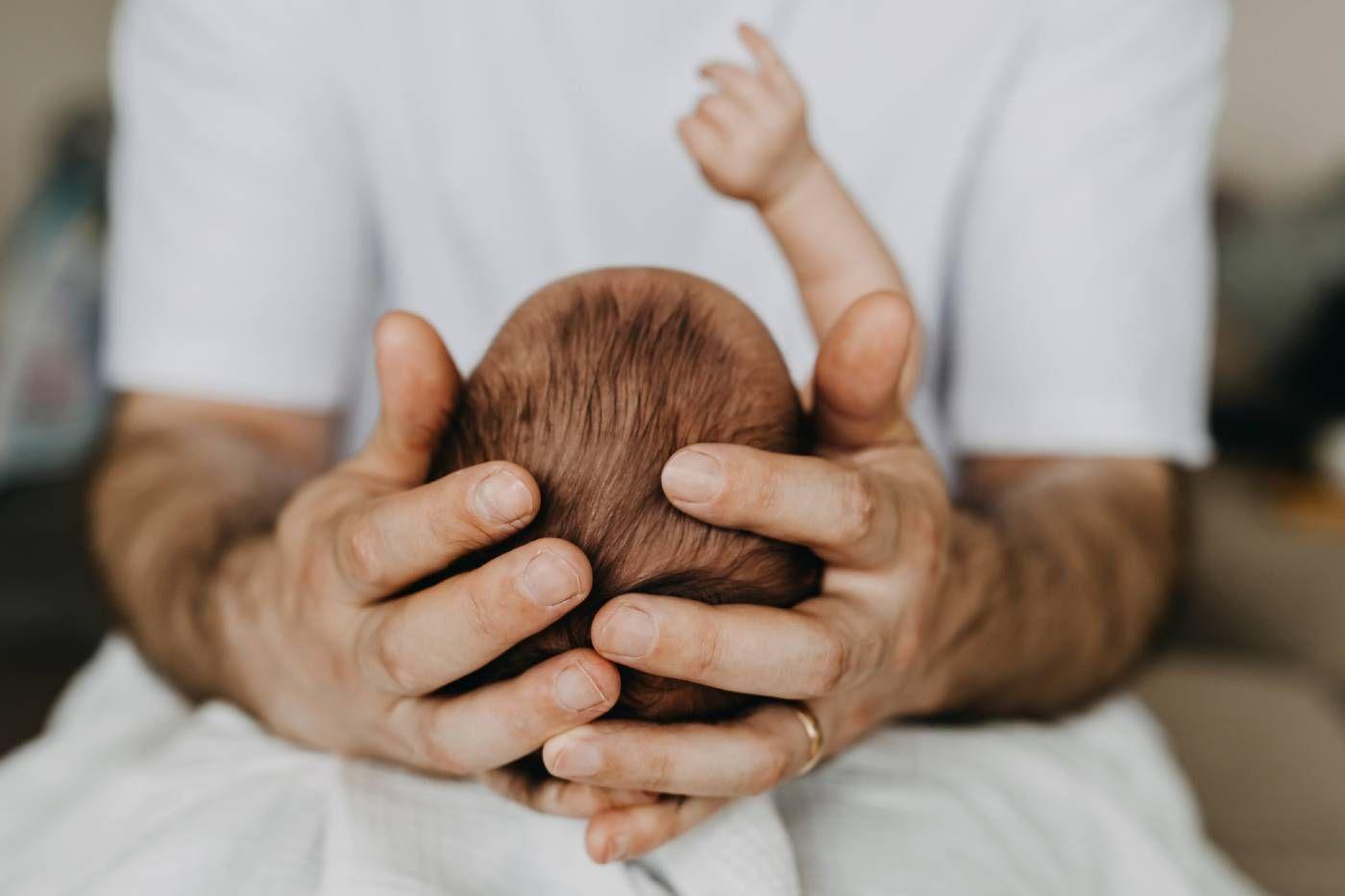PARENTS
How to Care for Your Baby’s Soft Spot
How nervous should you be when your fingers reach your baby’s soft spot, also called a fontanelle?

Written by
Dr. Harvey Karp

SHARE THIS ARTICLE
PARENT PICKS
Bestsellers
PARENTS

Written by
Dr. Harvey Karp

SHARE THIS ARTICLE
Bestsellers
That amazingly sweet smell that babies have on the top of their head is like catnip to new parents! And nuzzling that soft, fuzzy head is positively addictive. But, how nervous should you be when your fingers reach your baby’s soft spot, also called a fontanelle? Well, it turns out that Mother Nature has anticipated your touch—and concern—and has made your baby’s soft spot...quite strong.
Have you heard that a baby’s head can look a little banana-like right after vaginal delivery? Some babies have big round heads that can have a little difficulty fitting through the fully dilated cervix (10 centimetres across). So, nature created a special trick to make sure any sized head can slide out: squish-ability!
Adult skulls have one solid bone, but your baby’s skull is made up of a bunch of bones that are not yet unattached.
The best way to think of your baby’s head…is to look at your fist! Make a fist with one hand and use your other hand to wrap around it…and squeeze it a little. It will stay a fist, but shift—just a little—into a slightly new shape. Each of your fingers is like one of the bones of your baby’s skull. They are right next to each other, but they can shift to make the head a bit more banana-shaped…so it can fit out the cervix.
Between these little skull bones are a few ravioli-sized gaps. These gaps will later be filled in with bone, but for now they are covered by an amazing membrane, right under the skin, that is as tough as leather! This flexible design is so smart because it gives a bit more room for the head to squish and get a little smaller—for birth—but it also lets the head get bigger over the next few years, as your lovebug’s brain doubles in size!
The main soft spots are the anterior fontanelle—the obvious one right in the middle of the top of the head—and a smaller posterior fontanelle, on the back of the head.
Actually, the fontanelles get bigger during the first four months, perhaps doubling in size. That is because your baby’s brain is growing so fast. The fontanelles are like the elastic of your pregnancy pants, they snugly protect your baby’s amazing brain, but give it plenty of room to expand without feeling pinched. Through the second half of the first year, the baby soft spots shrink and are eventually completely replaced by bone.
A baby soft spot may feel scary to touch, but the membrane between the skin and the brain is actually pretty tough! So, you do not have to worry when you touch the area or give it a nice scrub when shampooing (especially important when your little has developed a case of cradle cap, right on top of the fontanelle!) That said, it is still wise to keep your toddler from banging their blocks or hitting their head against the baby spot spot.
It is a good idea to get familiar with your baby’s soft spot to be able to be on the look-out for a couple of weird things that occasionally occur…and warrant a call to your doctor.
Since the bigger anterior soft spot—in the middle of your baby’s head—is...well, soft, it can bulge out a bit when your baby coughs or strains to poop or is lying down. I is also common for parents to notice little heartbeat pulsations in the soft spots. This is totally harmless (it is just blood pumping through the vessels in your little one’s head)! However, if that fontanelle is looking bulgy even when your baby is sitting up, that is when you should call your medical provider for advice.
On the opposite side of the spectrum, sometimes your baby’s big fontanelle may look sunken in. When your baby’s soft spot sinks in—a bit—it is usually because your baby is sitting up. Usually, just laying your baby down for a few minutes will puff the soft spot back to normal, However, if your baby has been sick and the fontanelle stays sunken, that could be a sign of an underlying problem that requires immediate medical attention.
Two serious causes for a persistently sunken soft spot include:
It is a good idea to make it a habit to check out your baby’s soft spot every day and consult your paediatrician if you have any concerns.
As nerve-wracking as the idea of a soft spot can be, rest assured that they are actually a blessing because they allow your little love’s big curious brain to develop just as it should.
Disclaimer: The information on our site is NOT medical advice for any specific person or condition. It is only meant as general information. If you have any medical questions and concerns about your child or yourself, please contact your health provider. Breastmilk is the best source of nutrition for babies. It is important that, in preparation for and during breastfeeding, mothers eat a healthy, balanced diet. Combined breast- and bottle-feeding in the first weeks of life may reduce the supply of a mother's breastmilk and reversing the decision not to breastfeed is difficult. If you do decide to use infant formula, you should follow instructions carefully.